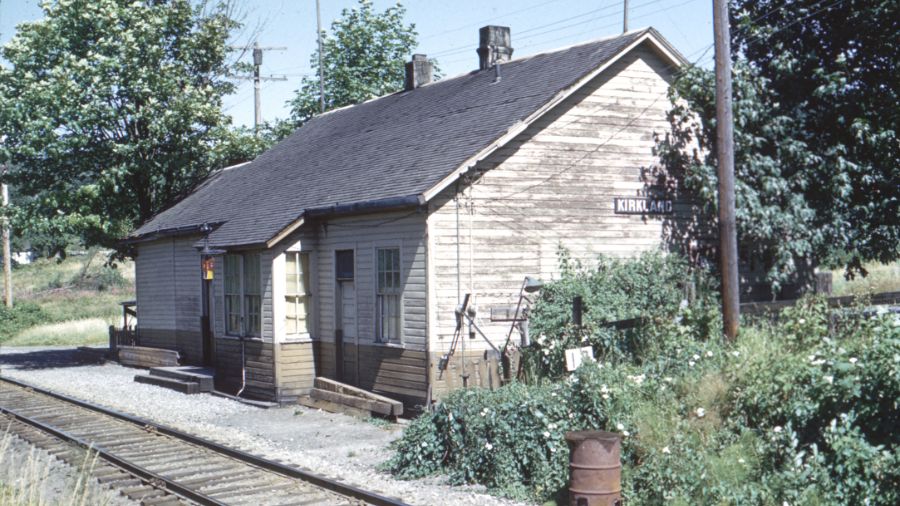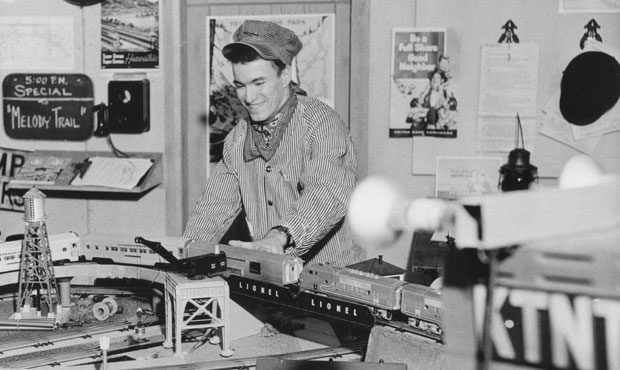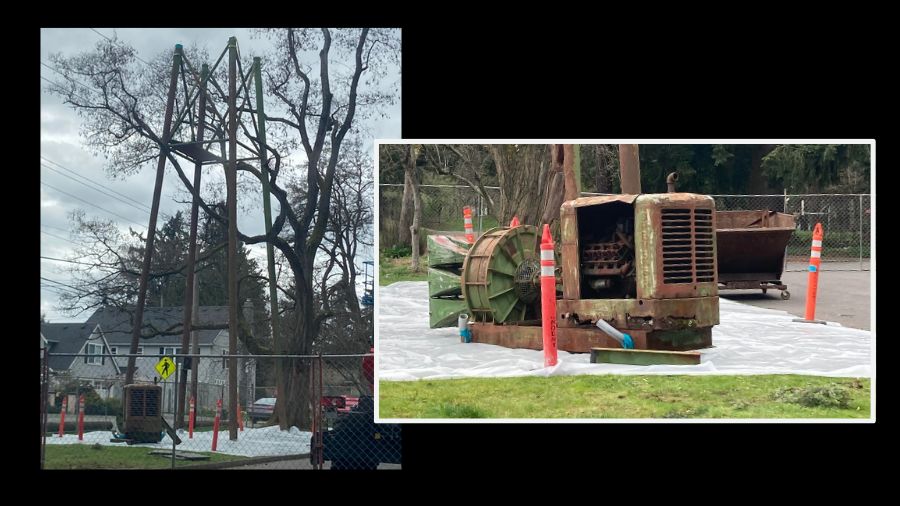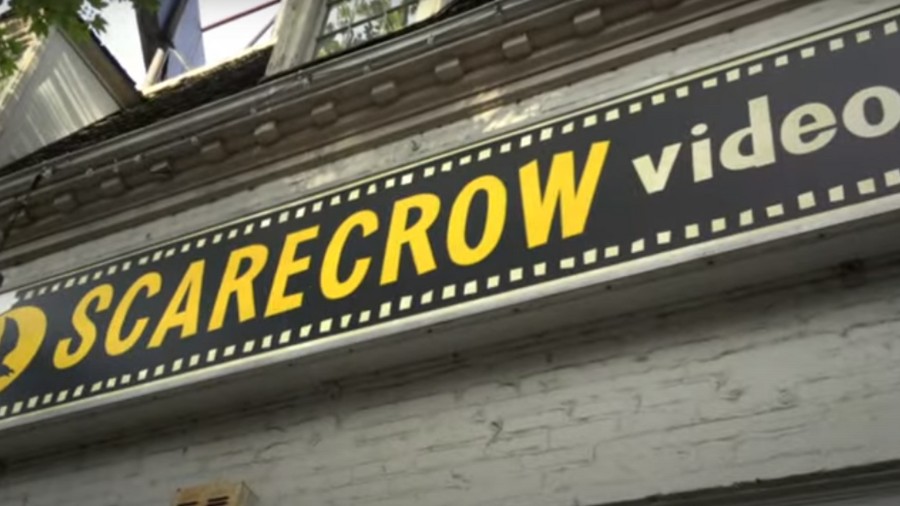How a lame duck president signed Washington Territory’s birth certificate on Inauguration Eve
Jan 20, 2021, 11:52 AM | Updated: 12:20 pm

President Millard Fillmore was a lameduck when he signed legislation creating Washington Territory on March 2, 1853 -- two days before Franklin Pierce was inaugurated. (Library of Congress)
(Library of Congress)
It was on March 2, 1853 – two days before the presidential inauguration of Pierce County namesake Franklin Pierce – when lame duck President Millard Fillmore signed the legislation creating the Washington Territory. Pierce was a Democrat; Fillmore was a member of the Whigs, one of the predecessors of the Republican Party.
Dr. Paul Finkelman is the president of Gratz College near Philadelphia. He’s also author of a book about Millard Fillmore published a decade ago. He says the process of Oregon Territory, which was created in 1848, being split up a few years later to create Washington Territory, was “pretty normal.”
As many Washingtonians know, it was in 1851 when a group of non-Native settlers living in the portion of Oregon Territory north of the Columbia River didn’t feel like they were getting a fair shake from the three-year old territorial government in Oregon City. So they organized the Cowlitz Convention — and, in 1852, the Monticello Convention — and petitioned Congress to create what was to be called the Columbia Territory.
In the mid-19th century, the division of one territory to create another was the “normal” part, says Dr. Paul Finkelman, citing similar examples in other regions of the United States. What was not normal, Dr. Finkelman says, was the presidency of Millard Fillmore.
The un-normal part began almost immediately after President Zachary Taylor died in July 1850. Fillmore had been Taylor’s vice president, and as was something of a custom, all of the cabinet secretaries submitted their resignations, to give Millard Fillmore the opportunity to refuse to accept those resignations. This was especially critical given the sudden death of President Taylor.
But Paul Finkelman says Millard Fillmore went his own way.
“Fillmore weirdly accepts every single one of these resignations,” Finkelman said. “In other words, he basically fires the whole cabinet [and] starts over. He has no idea who he’s going to put in many of these positions, and he spends a good deal of the first year [as president] trying to actually fill this cabinet, because he finds people don’t want to serve under him. They don’t want cabinet positions. So he goes from one piece of chaos to another.”
American politics in the 1850s is complicated, with bitter divisions over slavery fueling battles over admission of states and territories, and a variety of short-lived political parties forming around single issues.
Against this backdrop and in this divided era, President Fillmore is remembered by many for signing the Fugitive Slave Law in 1850, which further inflamed the divisions already growing in the United States into what would eventually erupt in 1861 with the Civil War.
Paul Finkelman says Fillmore’s politics around race – such as his support for the Fugitive Slave Law – were consistent with his personal views.
“Fillmore has a long history of being opposed to anti-slavery, being opposed to abolitionists, being pretty racist in his behavior,” Finkelman said. “And I use ‘racist’ in the context of the 1850s, not in our own times; that is, by the standards of his day. He was overwhelmingly hostile to Black rights. He used offensive language when talking about Blacks in ways that other people didn’t.”
“As a historian, you have to look at the language of the time to understand what people are saying and doing,” Finkelman continued. “Fillmore is a bad actor when it comes to slavery and race by the standards of his own day, not [only] by our standards.“
Why did Fillmore hold these views and speak the way he did?
Dr. Finkelman says that’s just who Fillmore was. One theory is that the views and speech were at least partly because Fillmore was not educated in the traditional sense. Like Abe Lincoln, he was a son of the frontier who taught himself the law – and, in fact, became a practicing lawyer – by reading law books and clerking with an established practice.
Fillmore was born in 1800 and became involved in local politics in the 1820s – first as part of something called the Anti-Masonic Party, near where he was raised in Western New York. He eventually served as a member of the New York Assembly, and then was elected to Congress, where he became a protégé of Senator Daniel Webster of Massachusetts. Fillmore had national ambitions, which is how he ended up running as Zachary Taylor’s vice president in 1848.
Despite the chaos, when the 1852 election approached, the incumbent Fillmore did seek the Whig nomination to run for a full term as president. But like so much of his short presidency, that effort didn’t go as planned.
At a divided convention of the Whigs in June 1852, General Winfield Scott secured the nomination after multiple ballots. General Scott was believed to be a better bet than Fillmore to beat the Democratic nominee Franklin Pierce.
Also in the running for the nomination had been Fillmore’s Secretary of State (and previous mentor) Daniel Webster; Dr. Finkelman says Fillmore never even confronted Webster.
“Fillmore doesn’t have the guts to call Webster into his office and say, ‘As my Secretary of State, I order you to either resign immediately … or release your delegates so that I can get the nomination,’” Finkelman said.
“Fillmore can’t even engineer his own nomination,” Finkelman said. And after, for the remainder of his term, “his administration is one of utter chaos.”
Meanwhile, Oregon Territory’s delegate in Congress, Joseph Lane, introduced a resolution seeking creation of the new territory during a lame duck session of the House on December 6, 1852. The new jurisdiction was approved by the House of Representatives on February 8, 1853 – though they did change the name from “Columbia” to “Washington” – and then approved by the Senate on March 2, 1853 in time for President Fillmore to sign.
Being passed over by the Whigs at the convention, means that Fillmore had ultimately served as a lame duck for more than eight months by the time he signed Washington Territory into existence on March 2, 1853. Two days later, Fillmore was on hand when his successor President Pierce was inaugurated.
Not long after that, President Pierce appointed Isaac Stevens to be Washington’s controversial first territorial governor; or, in other words, elections have consequences, as some might say.
Fillmore did run for president again in 1856 – as the standard-bearer of the Know Nothing Party, which was anti-Catholic, anti-Irish, and anti-immigration – but James Buchanan was victorious. Fillmore later married a wealthy widow and settled in Buffalo, and became something of secondary political figure in the 1860s.
“Fillmore is one of the very, very few former Whigs who does not become a Republican, but instead opposes Lincoln, and during the Civil War is an embarrassment,” Finkelman said. “He’s an embarrassment to himself because he makes a speech where he praises the South and denounces abolition, denounces ending slavery, denounces making more war on what he calls the most beautiful part of the nation [the Confederacy] and he lives the rest of his life and kind of semi-disgrace.”
Millard Fillmore died in Buffalo in 1874 at age 74, and his legacy as a less-than-one-term president whose policy decisions helped lead to the Civil War is well-known among scholars.
But what about Washingtonians, circa 2021? How should Evergreen State residents regard Millard Fillmore, the president whose signature created the territory that in 1889 became a state?
“You should simply say that it’s nice that in 1853 Congress decided to split Washington off from Oregon so Oregon could go its way and Washington go its way,” Finkelman said. “And by the luck of the draw, you happen to have that law signed by somebody who is arguably one of the five or six worst Presidents in American history.”
But, Dr. Finkelman says, it could have been worse – or, at least just as bad if that signature had come two days later.
“If you’d waited for Pierce [to sign], you would have had somebody who is also one of the five or six worst,” Finkelman said, pointing out that in the 1850s, “we have a string of disastrous presidents, Fillmore, Pierce, Buchanan are generally considered to be in the bottom – we used to call them ‘The Bottom Five.’”
“Now, I think we have to call them ‘The Bottom Six,’” Finkelman said.
You can hear Feliks every Wednesday and Friday morning on Seattle’s Morning News and read more from him here. If you have a story idea, please email Feliks here.













